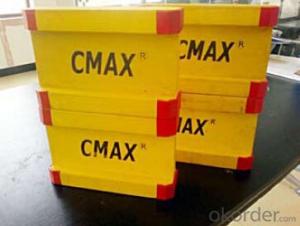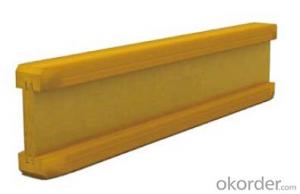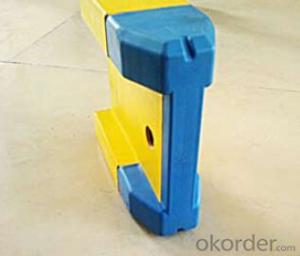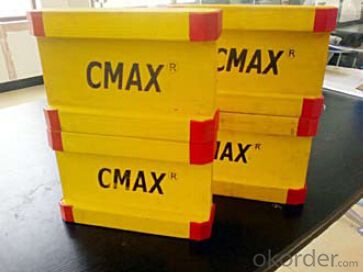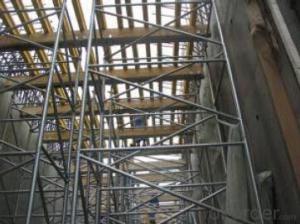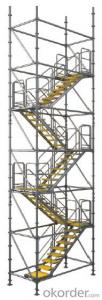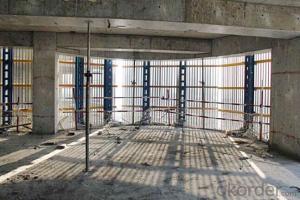Timber-Beam for formwork and scaffolding systems
- Loading Port:
- Tianjin
- Payment Terms:
- TT OR LC
- Min Order Qty:
- 50 m²
- Supply Capability:
- 1000 m²/month
OKorder Service Pledge
OKorder Financial Service
You Might Also Like
Characteristics:
◆ Standardized production lines.
Supply capability: 3000m/day, Lmax = 6600mm.
◆ Finger jointing of the flange and web, the strength of timber beam is highly improved.
Max. shearing force failure load:40KN
◆ Well treated to prevent from water penetration or erosion, so the service life maximally extended.
Normally, CNBM timber beam H20 can be used for 4 to 5 years, the exact using time would depend on maintenance & storage.
◆ Robust caps at the end of the girders protect against damages.
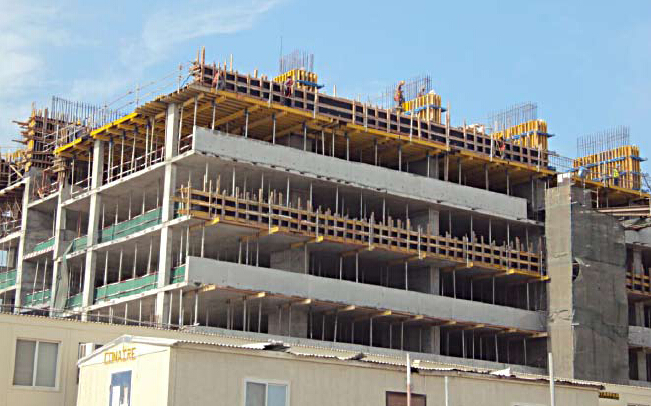
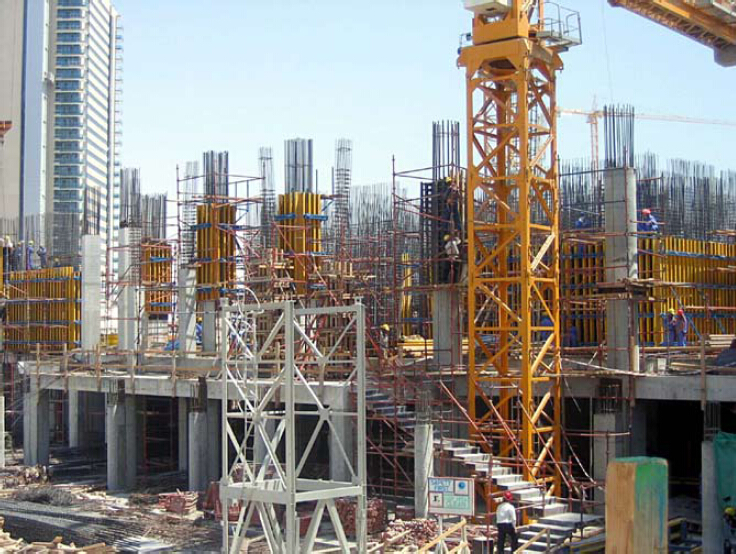
- Q: Those who have these drawings, can send a copy to me, online, etc.
- As long as the designer noted that the length of the beam, and the design of the whole number of expansion joints, there is a good design of the template.
- Q: Can steel formwork be used in marine construction projects?
- Certainly, marine construction projects can make use of steel formwork. Steel formwork, being a robust and flexible construction material, is capable of enduring the challenging conditions typically found in marine environments, such as saltwater, waves, and corrosion. It is frequently employed in marine construction projects for a variety of purposes, including the construction of piers, docks, seawalls, and other structures that necessitate a resilient and stable foundation. Steel formwork offers exceptional structural support and can withstand the immense loads and pressures that are commonly associated with marine construction. Furthermore, its ease of assembly and disassembly renders it a practical selection for marine construction projects, where time and efficiency are of utmost importance. All in all, steel formwork proves to be a dependable and appropriate choice for marine construction projects.
- Q: Can steel formwork be used in areas with limited construction access roads?
- Yes, steel formwork can be used in areas with limited construction access roads. Unlike traditional formwork made of wood or other materials, steel formwork is durable, lightweight, and can be easily transported to remote locations. It can be disassembled and reassembled multiple times, making it suitable for areas with limited access roads where transportation of heavy construction materials is challenging. Additionally, steel formwork offers high strength and stability, ensuring the structural integrity of the construction even in difficult-to-reach areas.
- Q: What are the different types of steel formwork available?
- In the construction industry, there exists a variety of steel formwork options, each possessing its own distinctive characteristics and benefits. Some of the most prevalent variations include: 1. Modular steel formwork: This formwork type comprises pre-made steel panels that can be effortlessly assembled and disassembled. It boasts customization capabilities and can accommodate concrete structures of diverse shapes and sizes. 2. Tunnel formwork: Specifically designed for tunnel and underground structure construction, this formwork variant is forged from steel plates. Its robust construction enables it to withstand high pressure and deliver a polished finish to the concrete. 3. Climbing formwork: Tailored for tall structures such as skyscrapers, climbing formwork is engineered to be lifted and moved vertically as construction progresses. This type of formwork ensures both safety and efficiency during the construction of multi-story buildings. 4. Steel soldier formwork: A versatile and cost-effective option often employed for walls and columns, steel soldier formwork is constructed using steel beams and soldiers. It can be easily adjusted to accommodate different heights and widths. 5. Steel frame formwork: Comprised of steel frames with attached plywood or metal panels, this lightweight formwork type is easy to handle and guarantees a smooth concrete finish. 6. Steel table formwork: Ideal for large horizontal slabs, steel table formwork utilizes steel tables supported by props or scaffolding. Its quick assembly and dismantling make it perfect for projects with tight timelines. These examples represent only a fraction of the available steel formwork options. The selection of formwork depends on project-specific requirements, including the structure type, load-bearing capacity, and desired finish.
- Q: What are the different types of finishes available for steel formwork?
- There are several different types of finishes available for steel formwork, each offering unique advantages and characteristics. Some of the most common finishes include: 1. Smooth finish: This is the most basic type of finish, where the steel formwork is left untreated. It provides a clean and smooth surface, making it suitable for applications where a smooth concrete finish is desired. 2. Galvanized finish: Galvanizing involves coating the steel formwork with a layer of zinc to protect it from corrosion. This finish is highly durable and can withstand harsh weather conditions, making it ideal for outdoor applications. 3. Powder-coated finish: Powder coating involves applying a dry powder to the steel formwork and then baking it on. This finish provides a decorative and durable coating that is resistant to chipping, scratching, and fading. It is available in a wide range of colors, allowing for customization. 4. Painted finish: Painting the steel formwork is another common option. It provides protection against corrosion and enhances the aesthetics of the formwork. Different types of paints, such as epoxy or acrylic, can be used depending on the specific requirements of the project. 5. Shot-blasted finish: Shot blasting involves projecting small steel shots onto the surface of the formwork at high velocity. This process removes any impurities, rust, or old coatings, resulting in a clean and textured finish. Shot blasting is commonly used when a rough surface is desired for better adhesion of the concrete. 6. Treated finish: Some steel formwork can be treated with special coatings or chemicals to enhance their properties. For example, anti-stick coatings can be applied to prevent concrete from adhering to the formwork, making it easier to remove after curing. Other treatments may include rust inhibitors or fire-resistant coatings. The choice of finish for steel formwork depends on various factors such as the intended use, environmental conditions, desired aesthetics, and budget. Consulting with a professional or manufacturer can help determine the most suitable finish for a specific project.
- Q: Can steel formwork be used in areas with high humidity levels?
- Yes, steel formwork can be used in areas with high humidity levels. Steel is a durable and corrosion-resistant material, making it suitable for use in humid environments. However, proper surface treatment and maintenance should be applied to prevent rusting and ensure the longevity of the steel formwork.
- Q: What are the common safety certifications for steel formwork systems?
- The common safety certifications for steel formwork systems include ISO 9001:2015, OHSAS 18001, and EN 12811-1.
- Q: What is the maximum load capacity of steel formwork?
- The maximum load capacity of steel formwork can vary depending on several factors such as the thickness and quality of the steel, the design of the formwork system, and the type of load being applied. Generally, steel formwork is known for its high load-bearing capacity and durability, making it suitable for heavy-duty construction projects. In practice, the load capacity of steel formwork is typically determined by conducting load tests and following engineering calculations. These tests involve applying specific loads to the formwork and measuring its ability to withstand them without failure or deformation. While it is not possible to provide an exact figure for the maximum load capacity of steel formwork without specific information about the formwork system in question, it is common for steel formwork to have load capacities ranging from several hundred kilograms per square meter to several tons per square meter. However, it is essential to consult the manufacturer's specifications, engineering documentation, or an experienced structural engineer to determine the precise load capacity of a particular steel formwork system to ensure safe and efficient construction practices.
- Q: What are the common safety certifications required for steel formwork?
- There are several common safety certifications that are often required for steel formwork in order to ensure the highest level of safety on construction sites. These certifications include: 1. OSHA Certification: The Occupational Safety and Health Administration (OSHA) certification is a crucial requirement for steel formwork. It ensures that the formwork meets the safety standards set by OSHA, which includes provisions for fall protection, proper scaffolding, and other safety measures. 2. ANSI Certification: The American National Standards Institute (ANSI) certification is another essential requirement for steel formwork. ANSI sets standards for various aspects of construction safety, including materials, equipment, and worker protection. An ANSI certification ensures that the formwork meets these standards. 3. CSA Certification: The Canadian Standards Association (CSA) certification is typically required for steel formwork used in Canada. It ensures that the formwork meets the safety standards set by the CSA, which covers various aspects of construction safety, including design, materials, and structural integrity. 4. CE Marking: The CE marking is a certification required for steel formwork used in the European Union and other countries that adhere to European standards. It indicates that the formwork meets the essential health, safety, and environmental protection requirements set by the European Union. 5. ISO Certification: While not specifically related to safety, an ISO certification demonstrates that the manufacturer of the steel formwork has implemented a quality management system that adheres to the International Organization for Standardization (ISO) standards. This certification ensures that the formwork is produced consistently and meets certain quality requirements. It is important to note that the specific certifications required for steel formwork may vary depending on the country, region, or project requirements. Therefore, it is crucial to consult local regulations and project specifications to determine the exact certifications needed for steel formwork in a specific context.
- Q: Can steel formwork be used for both horizontal and vertical concrete elements?
- Yes, steel formwork can be used for both horizontal and vertical concrete elements. Steel formwork provides strength, stability, and durability, making it suitable for a wide range of construction projects. Its versatility allows for the creation of various shapes and sizes, making it a preferred choice for both horizontal slabs and vertical walls.
Send your message to us
Timber-Beam for formwork and scaffolding systems
- Loading Port:
- Tianjin
- Payment Terms:
- TT OR LC
- Min Order Qty:
- 50 m²
- Supply Capability:
- 1000 m²/month
OKorder Service Pledge
OKorder Financial Service
Similar products
Hot products
Hot Searches
Related keywords
